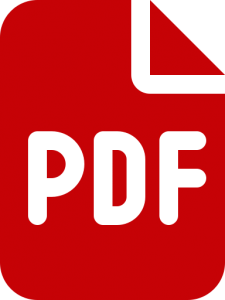The staffing industry is undergoing rapid transformation, driven by technological innovation, shifting workforce preferences, and global economic pressures. From traditional recruitment models to the rise of gig platforms and data-driven hiring, staffing industry trends in 2025 reflect a significant evolution.
This article explores key movements in recruitment, gig economy insights, contingent workforce analytics, and the latest data from staffing industry reports—including SIA ranking staffing firms, and trends in RPO (Recruitment Process Outsourcing) and MSP (Managed Service Providers).
1. Key Staffing Industry Trends in 2025
Staffing firms are no longer just “middlemen” between job seekers and employers. They now offer strategic talent solutions, technology integration, and workforce intelligence. Here are the top staffing industry trends:
🔹 Rise of Specialized Talent Solutions
Firms are shifting toward niche staffing, offering expertise in IT, healthcare, logistics, and executive search.
🔹 Tech-Driven Recruitment
AI-powered applicant tracking systems (ATS), chatbots, and resume parsers are streamlining the candidate experience.
🔹 Demand for Remote Talent
Post-pandemic flexibility has normalized remote work, increasing cross-border recruitment and global talent acquisition.
🔹 Emphasis on Employer Branding
Staffing agencies are helping clients improve visibility and appeal through marketing and digital reputation strategies.
2. Gig Economy Insights
The gig economy has redefined employment—favoring short-term, freelance, and contract-based jobs. Platforms like Upwork, Fiverr, and even Uber reflect this shift.
📈 Growth and Impact
-
According to recent staffing industry reports, gig workers could make up 30% of the global workforce by 2030.
-
Millennials and Gen Z prefer project-based work for its flexibility and autonomy.
🔎 Challenges
-
Lack of social protections
-
Income instability
-
Difficulty tracking gig labor data for employers
However, many staffing firms now manage hybrid workforces, incorporating both permanent and gig talent pools into broader HR strategies.
3. SIA Ranking Staffing Firms
Staffing Industry Analysts (SIA) is the most trusted global authority for evaluating staffing firms.
🏆 SIA’s 2025 Global Staffing Firm Rankings
-
Adecco, Randstad, and ManpowerGroup continue to dominate.
-
Rapid growth seen in tech-driven firms like Allegis Group and Insight Global.
-
SIA also ranks firms by revenue, innovation, and customer satisfaction.
🔍 What the Rankings Tell Us
-
Tech investment is a major differentiator.
-
Firms with end-to-end workforce solutions outperform traditional temp agencies.
-
Compliance, diversity hiring, and analytics capabilities are emerging success factors.
4. Recruitment Market Research
Based on the latest recruitment market research, employers are focusing on:
-
Skills-based hiring instead of degree-based
-
Candidate experience as a recruitment metric
-
Use of video interviews, automated screening, and talent pooling
In 2025, the global recruitment services market is valued at over $600 billion, with Asia-Pacific and North America leading demand due to population and startup growth.
5. RPO and MSP Trends
Recruitment Process Outsourcing (RPO) and Managed Service Providers (MSP) are reshaping how companies scale their talent acquisition.
✅ RPO Trends
-
Growth in project-based RPO for short-term hiring spikes
-
Expansion into SMEs, not just large enterprises
-
Integration with employer branding and onboarding processes
✅ MSP Trends
-
Focus on contingent workforce management
-
Consolidation of suppliers and improved VMS (Vendor Management Systems)
-
Growing use of data analytics and compliance automation
Together, RPO and MSP models allow companies to scale faster, stay compliant, and focus on core business activities.
6. Contingent Workforce Analytics
Understanding the behavior and productivity of non-permanent staff is crucial. Enter contingent workforce analytics.
📊 What It Measures:
-
Cost per hire
-
Time-to-productivity
-
Contractor compliance risks
-
Skill gaps and training needs
-
Project-based performance data
Analytics platforms help HR and staffing firms predict workforce shortages, optimize contractor performance, and allocate budgets efficiently.
7. Strategies for Staffing Firms in 2025
To stay competitive, staffing firms should:
-
Invest in AI and data platforms
-
Develop D&I (Diversity & Inclusion) hiring pipelines
-
Offer payrolling, EoR (Employer of Record), and onboarding services
-
Expand global sourcing capabilities
-
Promote ESG compliance in hiring
8. The Future: Integration of Tech and Talent
🔮 What’s Next?
-
Blockchain for credential verification
-
AR/VR in virtual onboarding
-
Predictive hiring using behavioral AI
-
Decentralized hiring networks powered by smart contracts
The staffing industry is not just digitizing—it’s becoming a data-driven, predictive ecosystem.
The staffing industry trends in 2025 reflect a bold new direction. With the gig economy, global talent access, and tech innovation shaping hiring, staffing firms must evolve beyond recruitment to become strategic workforce partners.
Whether you’re a recruiter, HR leader, or workforce analyst, understanding the dynamics of SIA rankings, RPO/MSP trends, and contingent workforce analytics is key to navigating the future of work.









